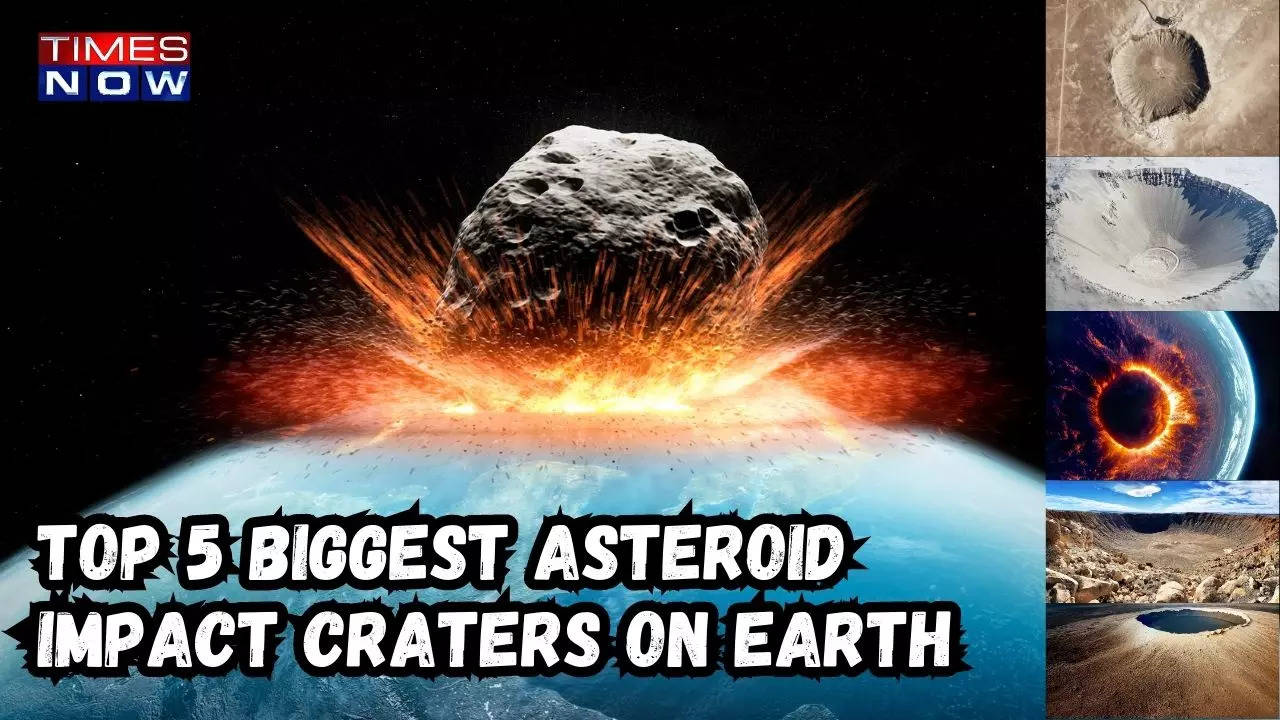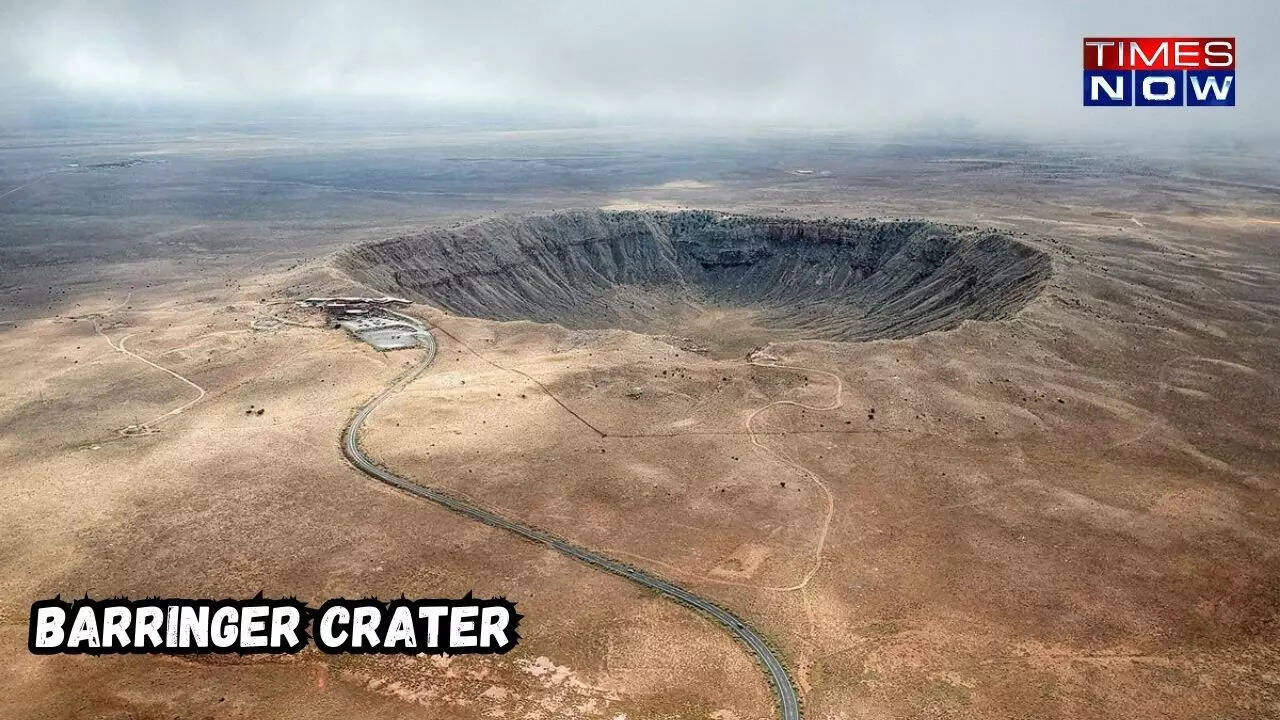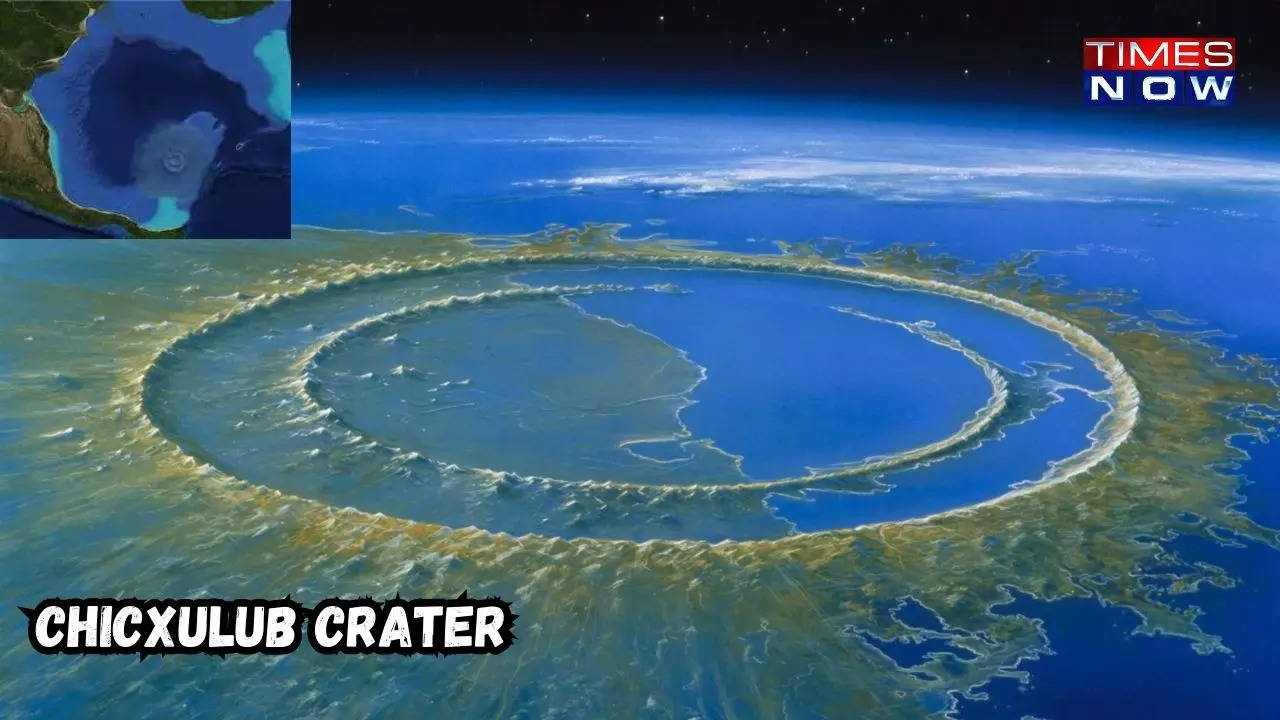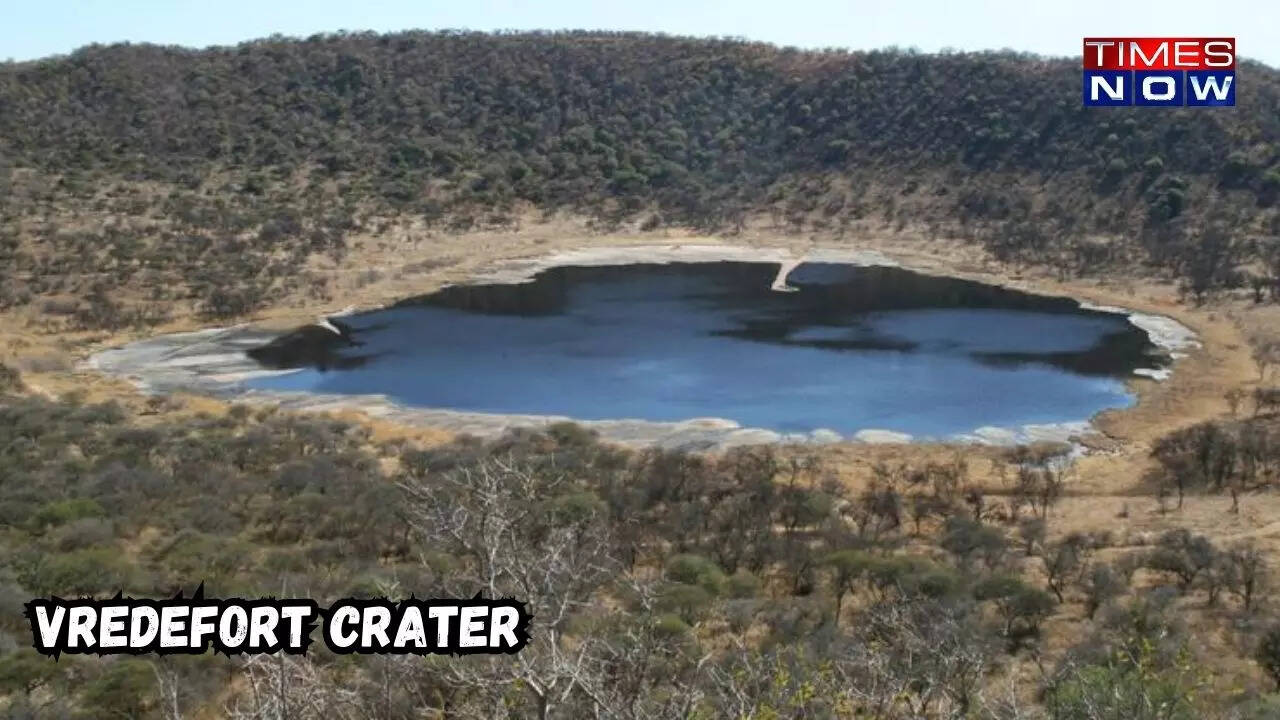Earth's Battle Scars: 5 Asteroid Impact Craters That Reveal Our Planet's Fiery History!
Unravel the captivating history of our planet through the lens of its five most phenomenal meteorite impact craters - unraveling their tales of devastation, resilience, and unique scientific marvels.

Updated Jun 10, 2023 | 04:07 PM IST

The Extraterrestrial Thunder: A Trip Down Impact Lane
KEY HIGHLIGHTS
- Unearth the secrets of the Barringer Crater, where the quest to understand meteorite impacts began.
- Discover the apocalyptic tale of the Chicxulub crater, the suspected cause behind the extinction of dinosaurs.
- Explore the glittering world of Nördlinger Ries, where buildings sparkle with micro-diamonds from an ancient meteorite impact.
The Earth's face is marred by spectacular scars – the aftermath of explosive encounters with celestial invaders from the vast cosmos. Each of these five fiery craters has a compelling tale to tell, painting a vibrant picture of our planet's tumultuous past.

1. Barringer Crater : The Genesis of Impact Studies
Residing in the heart of Arizona, USA, the Barringer Crater, popularly known as the Meteor Crater, set the stage for meteorite impact studies. A vibrant 'youngling' of around 50,000 years, this crater caught the attention of scientists in the late 19th century, igniting debates over its origin. The discovery of high-pressure quartz forms and meteorite fragments near the 1 km-wide crater in the 1960s offered the conclusive evidence that this crater was the result of a meteorite impact.
Fast forward to now, this well-preserved wonder is both a scientific research hot spot and an astronaut training ground. Not to mention, it's a terrific tourist spot with a brilliant gift shop!

2. Chicxulub: The Jurassic Juggernaut
Tucked away in Mexico's Yucatán peninsula, the Chicxulub crater bears witness to an apocalyptic event from 66 million years ago. This 180 km wide dinosaur destroyer sent a 10 km wide meteorite hurtling towards Earth at a blistering 20 km/s, causing the extinction of about 75% of the plant and animal species on Earth. With ash and gases blotting out the Sun, this cataclysmic event plunged the Earth into a years-long winter, after which the crater became a thriving biosphere.

3. Vredefort : The Gold-Dusted Goliath
Vredefort in South Africa is a geologic goldmine, literally! This gargantuan 2 billion-year-old crater, the largest on Earth, has given up a third of the world's gold. Its complex multi-ring structure offers a peek into a substantial chunk of Earth’s history and displays rocks as old as 3.5 billion years.

4. Tnorala : The Dreamtime Diva
Gosses Bluff or Tnorala crater in Australia is more than a geological wonder; it's an integral part of the oldest continuous living culture in the world. According to Western Arrernte people's Dreamtime stories, the 142 million-year-old Tnorala was formed when a baby carrier from the Milky Way crashed into Earth. The 4.5 km diameter crater stands 150 m tall, offering a glimpse into a rich cultural tapestry that is uniquely Australian.

5. Nördlinger Ries : The Diamond Dealer
Nördlinger Ries in Germany is a diamond in the rough, formed about 14 million years ago. A graphite layer present in the pre-impact rocks underwent intense pressure and temperatures during the impact, resulting in millions of micro-diamonds, now glittering across the city's buildings.
The impact also created beautiful green tektites known as moldavites, a semi-precious stone found in jewellery.
New Craters on the Horizon!
The diversity of Earth's craters is astounding, and they all have riveting scientific secrets still waiting to be uncovered. And as satellite imaging technology continues to evolve, we can anticipate discovering even more awe-inspiring craters on our extraordinary planet. Each one is an invitation to delve deeper into the workings of our planet and the Solar System itself.
End of Article
Videos





02:08
What Are Key Differentiating Points In Poonawalla Fin Corp ? | Explains MD Abhay Bhutada

03:23
Breaking News | BJP MP Accuses Leaders Of 'Adjustment' With Congress In Karnataka, Sparks Infighting

03:38
Manipur Violence Erupts Again As Kukis, Meiteis Refuse Peace Talks| 9 Killed In Flare-Up

03:03
How MD of Poonawalla Fincorp Abhay Bhutada Started His Career ? | Business News

03:56
TMC Workers Clash In West Bengal Ahead Of Upcoming Panchayat Polls | Election News












